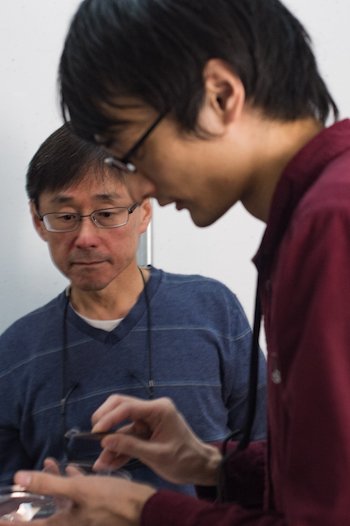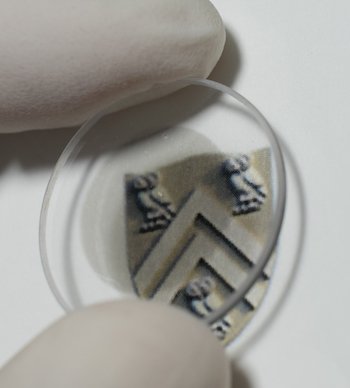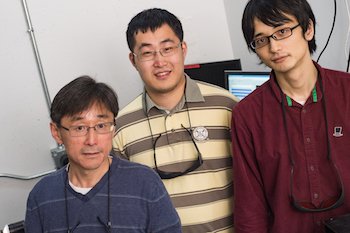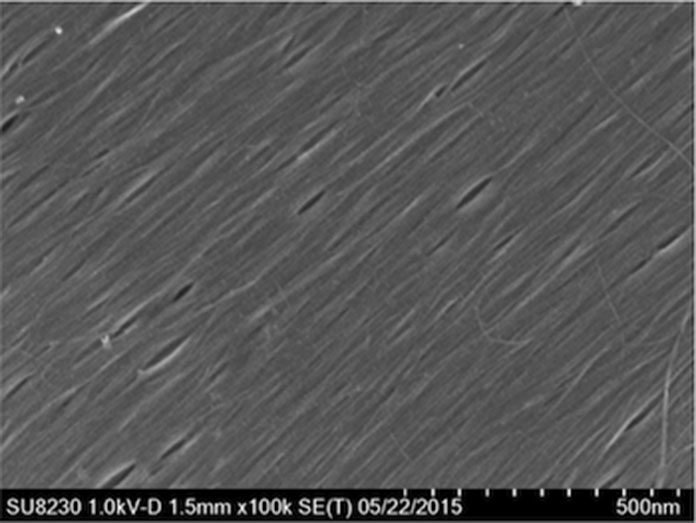Rice scientists along with scientists from Tokyo Metropolitan University have detected a novel type of quantum effect in a carbon nanotube film that contributes to the development of unique lasers and other optoelectronic devices. This phenomenon could be key to developing optoelectronic devices like nanoscale, near-infrared lasers that emit continuous beams at wavelengths too short to be produced by current technology.
Scientists reported an advance in the ability to manipulate light at the quantum scale by using single-walled carbon nanotubes as plasmonic quantum confinement fields.

The task met up in the wake of the Kono gathering’s disclosure of an approach to accomplish tight arrangement of carbon nanotubes in wafer-sized movies. These movies took into consideration analyzes that were excessively hard to do on single or tangled totals of nanotubes and got the consideration of Tokyo Metropolitan physicist Kazuhiro Yanagi, who ponders dense issue material science in nanomaterials.
Physicist Junichiro Kono said, “He brought the gating technique (which controls the density of electrons in the nanotube film), and we provided the alignment technique. For the first time, we were able to make a large-area film of aligned nanotubes with a gate that allows us to inject and take out a large density of free electrons.”
“The gating technique is very interesting, but the nanotubes were randomly oriented in the films I had used. That situation was very frustrating because I could not get precise knowledge of the one-dimensional characteristics of nanotubes in such films, which is most important. The films that can only be provided by the Kono group are amazing because they allowed us to tackle this subject.”
The technique allowed us to pump electrons into nanotubes that are little more than a nanometer wide and then excite them with polarized light. The width of the nanotubes caught the electrons in quantum wells, in which the vitality of iotas and subatomic particles is “restricted” to specific states or subbands.
Light at that point incited them to waver immediately between the dividers. With enough electrons, they mimic as plasmons.

Kono said, “Plasmons are collective charge oscillations in a confined structure. If you have a plate, a film, a ribbon, a particle or a sphere and you perturb the system (usually with a light beam), these free carriers move collectively with a characteristic frequency.”
“Because the nanotubes in the Rice experiments were so thin, the energy between the quantized subbands was comparable to the plasmon energy. This is the quantum regime for plasmons, where the intersubband transition is called the intersubband plasmon. People have studied this in artificial semiconductor quantum wells in the very far-infrared wavelength range, but this is the first time it has been observed in a naturally occurring low-dimensional material and at such a short wavelength.”
“Detecting a very complicated gate voltage dependence in the plasmonic response was a surprise, as was its appearance in both metallic and semiconducting single-walled nanotubes. By examining the basic theory of light-nanotube interactions, we were able to derive a formula for the resonance energy. To our surprise, the formula was very simple. Only the diameter of the nanotube matters.”
Weilu Gao, a co-author on the study said, “While traditional semiconductor lasers depend on the width of the lasing material’s bandgap, quantum cascade lasers do not. The wavelength is independent of the gap. Our laser would be in this category. Just by changing the diameter of the nanotube, we should be able to tune the plasma resonance energy without worrying about the bandgap.”
Kono also expects the gated and aligned nanotube films will give physicists the opportunity to study Luttinger liquids, theoretical collections of interacting electrons in one-dimensional conductors.

Yanagi, a professor of condensed matter physics at Tokyo Metropolitan University, is the lead author of the paper. Co-authors are graduate student Ryotaro Okada, graduate student Yota Ichinose and Yohei Yomogida, an assistant professor of condensed matter physics, all at Tokyo Metropolitan, and graduate student Fumiya Katsutani at Rice. Kono is a professor of electrical and computer engineering, of physics and astronomy, and of materials science and nanoengineering.
The research was supported by Japan Society for the Promotion of Science Grant-in-Aid for Scientific Research (KAKENHI) grants, a Japan Science and Technology Core Research of Evolutional Science and Technology grant, the Yamada Science Foundation and the Basic Energy Sciences program of the U.S. Department of Energy, the National Science Foundation and the Robert A. Welch Foundation.
The new research is detailed in Nature Communications.
